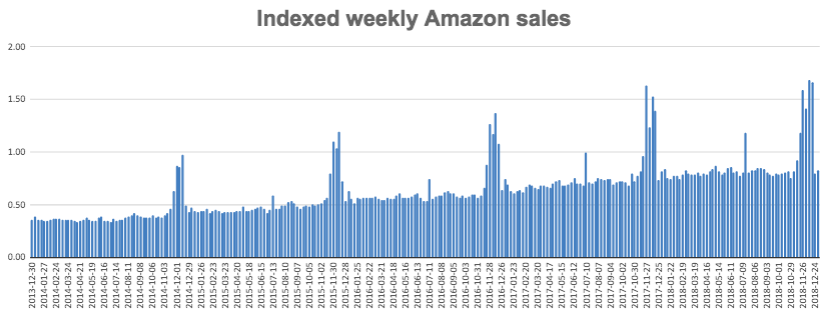The real sales power of Amazon Prime Day
This year’s Amazon Prime Day will likely generate historic sales numbers, as the annual sale event has expanded to 48 hours — its longest ever. But analysts are putting question marks on whether it’s still powerful enough to bring in new Prime members.
Prime Day has been an incentive to lure customers into Amazon’s ecosystem by offering exclusive deals. But it may not be as powerful as it once was in attracting non-Prime members to sign up, according to third-party research firms.
Last year’s Prime Day week saw a 40% drop in new U.S. Prime subscribers compared to the Prime event week in 2017, according to Second Measure, which analyzes credit card purchases.

Analysts at Consumer Intelligence Research Partners (CIRP) believe Prime membership in the U.S. has reached its peak. Part of the reason is the sheer size of the subscription program, which was widely considered covering over half of the U.S. households. Amazon Prime membership in the U.S. has grown 139% from before the first Prime Day in 2015, CIRP’s data suggests.
The shift is likely to motivate Amazon (AMZN) to put more emphasis on increasing the amount spent by existing members and getting existing members to use more services in the Amazon ecosystem, from buying its private label products to ordering via voice assistant Alexa. Eleven of the top 20 best-selling products during last year’s Amazon Prime Day were Amazon’s own products, according to 1010data, an analytics firm.
“The earliest Prime Day promotions helped grow the base of Prime members,” said Mike Levin, partner and co-founder of CIRP. “This year we think the two-day Prime Day event will focus on selling more products to the established Prime member base. In this way it’s more like a traditional retail sale promotion, with the added appeal of some exclusive products and celebrity selections.”
Black Friday in July

The idea of Prime Day comes from the longtime tradition in the retail industry of “Black Friday in July.” For Amazon, it turns out to be even better, as U.S. weekly sales data compiled by Second Measure shows. In 2014, mid-July was still a bland time for Amazon like every other week in the summer. The weekly sale was less than half of the Black Friday week. A small peak usually came in late August for back-to-school shopping.
The introduction of Prime Day has been a game-changer — it has become the highlight of Amazon’s mid-year sale and effectively extended the window of back-to-school shopping. In 2017, Amazon’s U.S. Prime Day week sales exceeded Black Friday week sales.
“Consumers have been conditioned by retailers to need a trigger to purchase,” said Greg Portell, a lead partner at A.T. Kearney’s consumer and retail practice. “Prime Day plants Amazon’s flag in the commercial holiday landscape.”
This post was originally published on July 14.
Krystal Hu covers technology and China for Yahoo Finance. Follow her on Twitter.
Read more:
New bipartisan bills threaten Chinese IPOs and Chinese companies listed in the U.S.
This court ruling could change who’s responsible for your Amazon purchases
Read the latest financial and business news from Yahoo Finance
Follow Yahoo Finance on Twitter, Facebook, Instagram, Flipboard,SmartNews,LinkedIn, YouTube, and reddit.
